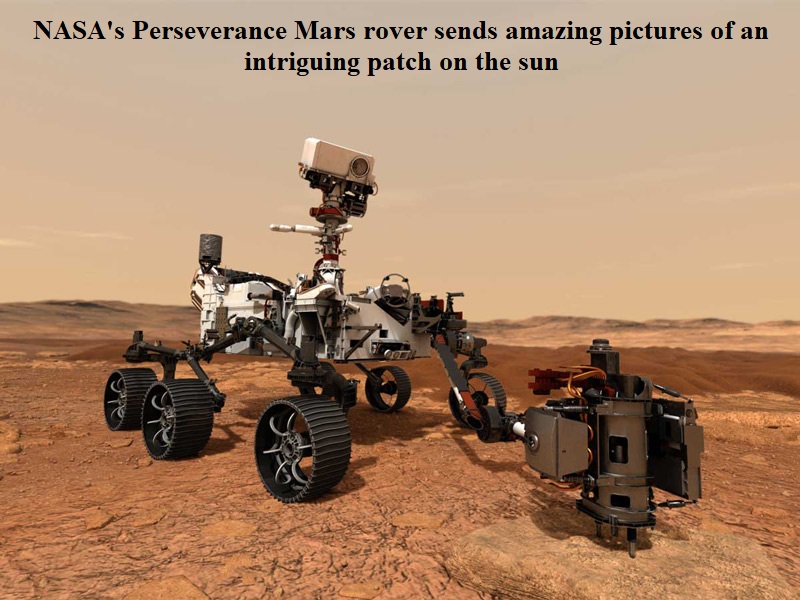
Presently traversing the Martian landscape, NASA’s Perseverance Mars rover has transmitted captivating images of an intriguing solar phenomenon not yet observable from Earth.
Employing its Mastcam-Z camera system, Perseverance successfully captured a significant sunspot traversing the solar disk in recent days. This remarkable feat was achieved late last week and over the weekend. Notably, the rover engages in daily monitoring of the Sun’s images to gauge the volume of dust present within the Martian atmosphere.
These sunspots possess the capacity to unleash potent solar storms. Perseverance serves as an early warning system for scientists by detecting these sunspots before they become visible from Earth’s vantage point. The rover’s unique advantage stems from Mars’ positioning on the far side of the Sun, granting it a week’s head start over Earth.
Sunspots have the potential to emit formidable coronal mass ejections (CMEs) capable of colliding with Earth and instigating potentially hazardous geomagnetic disturbances, even if the dark patches are imperceptible. Consequently, our vulnerability to extreme space weather events remains elevated.
Although the rover routinely captures images of the Sun, this function remains ancillary. The rover’s primary mission is to uncover signs of life on Mars, with Martian rocks potentially holding pivotal clues about the planet’s evolutionary history.
It is worth noting that the rover constitutes a vital component of an international interplanetary collaboration assembled to unravel the mysteries of our neighboring planet.
Anticipated around 2028, a Sample Retrieval Lander is set to depart Earth, carrying a Mars rocket led by NASA, alongside compact Mars helicopters. This lander will touch down near a crater close to the rover’s location, and the rock samples collected by Perseverance will be loaded onto the rocket.
The lander’s proximity to the Perseverance rover is crucial for the successful transfer of Mars samples, necessitating a landing within 66 yards (60 meters) of the designated site.
NASA revealed, “Two Ingenuity-like helicopters would provide a secondary capability to retrieve samples on the surface of Mars. Once the sample cache is launched off the Red Planet, another spacecraft would capture it in Mars orbit, and then bring it to Earth safely and securely in the early to mid-2030s.”

Post Your Comments